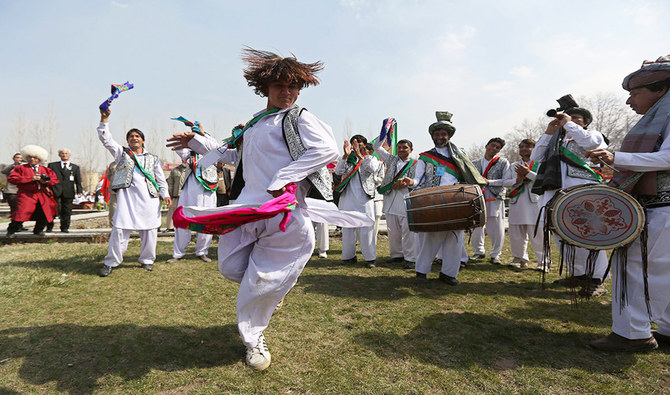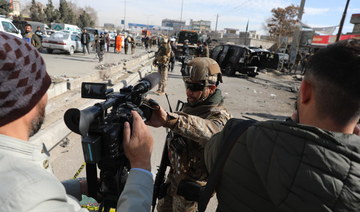KABUL: Afghanistan has applied to UNESCO to have the country’s ancient attan dance registered as intangible cultural heritage.
The routine, which has become Afghanistan’s national dance, was traditionally performed by Pashtun tribes ahead of battles or on special occasions such as weddings, the birth of a child, or national holidays.
Mahbooba Babakarkhail, head of intangible cultural heritage at the Afghan Ministry of Information and Culture, told Arab News: “For keeping this intangible art immortal and for introducing it to the world, we are registering it with UNESCO. Attan is our national identity, unique to Afghanistan. It is our national cultural heritage.
And ministry spokesperson, Sabir Mohmand, said: “We have fulfilled all the criteria required for registering attan with the UNESCO and have high hopes that it will happen.”
Attan is a form of dance that dates back nearly 3,000 years and was performed during Zoroastrian religious ceremonies.
“During Zoroastrian King Yama’s rule, whose seat of power was in northern Afghanistan, attan was performed before his army went to war because they believed it would boost the warriors’ confidence and help them defeat the enemy,” Babakarkhail said.
In a traditional attan performance, between 30 and 50 dancers match their moves to the beat of the dhol — a double-headed drum — while waving their scarves in the air. By synchronizing their steps with each beat of the dhol and pipe, the dancers form a circle and start with slow steps.
In some elaborate moves, seasoned dancers sequentially move their hips and arms from left to right while twisting their wrists in the opposite direction. Eventually, each dancer brings one of their hands forward, scooping it toward the center before clapping with the other hand. Gradually, the beats get faster and faster.
Each attan performance can last between five and 30 minutes, and it is not uncommon for dancers to faint due to the physical intensity of the dance. In some cases, Babakarkhail added, attan performers dance for two to three hours without a break.
She said that despite there being no formal training in the art form, the tradition had been kept alive in the country “through local teachers who act as the head of the group for the dancers.”
Janat Gul, a shopkeeper from the southeastern Paktia region near the border with Pakistan, told Arab News: “There is no association or union for attan dancing. So, we do not have a list of contact details for the ages or number of dancers here.
“I know in some regions, people as old as 70 still perform attan. You need strong legs and especially good knees to be able to do so beyond 55 years old,” he said.
There are several regional variations of attan, with the Mahsudi, Kabuli, Paktia or Khosti, Shenwari, Kandahari, Sistani, and Herati being the most popular ones.
In the Kabuli attan, men wear suits and ties, while women put on colorful dresses and dance to modern music.
Attan is so popular and intrinsically Afghan that even the Taliban are said to dance it despite banning performing arts during their rule from the mid-1990s until a US-led invasion in 2001.
Shafiqullah Mangal, a tribal chief from Khost province, said: “Attan is our pride, history, and a tough but very sweet type of dance. Not many can perform attan easily. But once you learn the nuts and bolts of it, you will become addicted to attan.”














